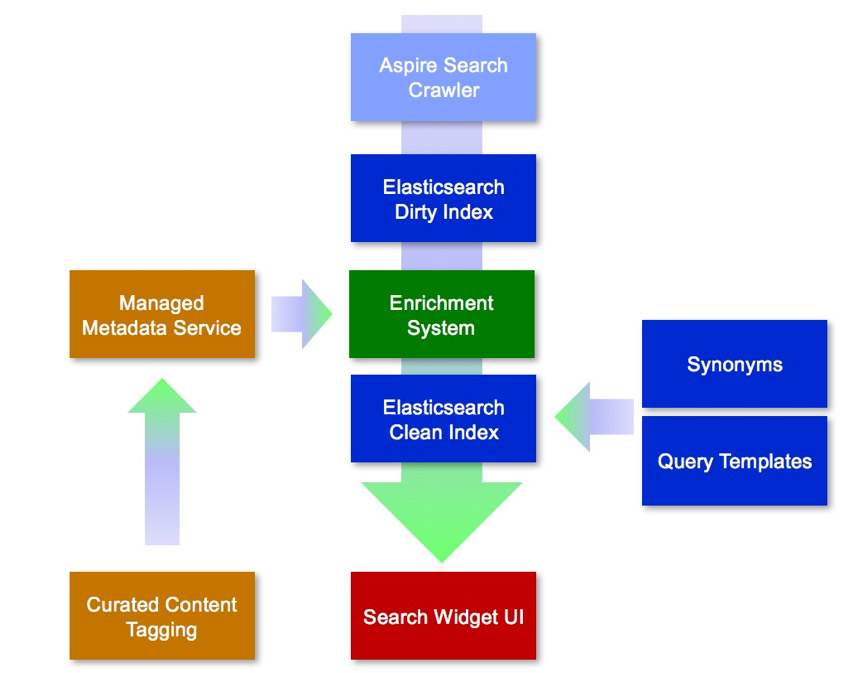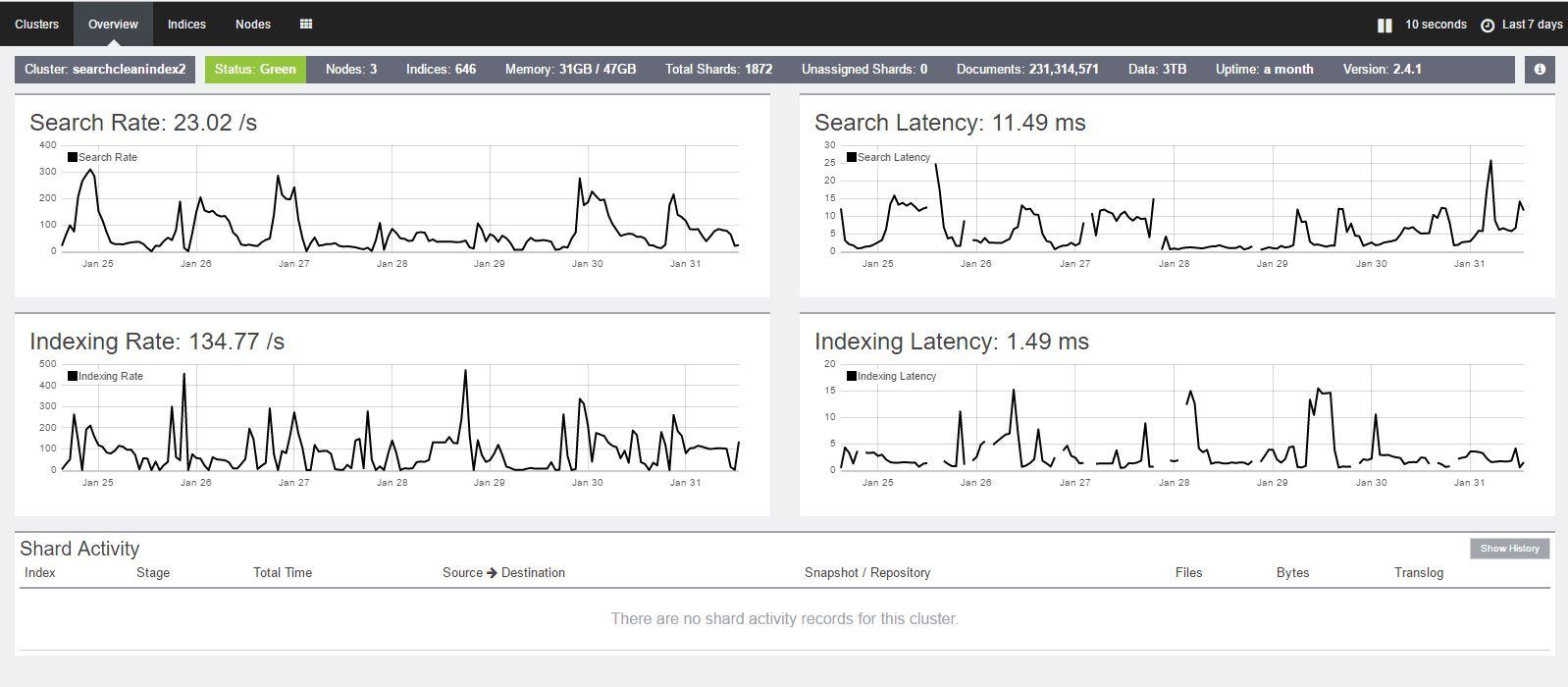Company Overview
Leading global professional services company Accenture aims to drive innovation that improves the way the world lives and works. Over the last three decades, consultants have worked on millions of projects, amassing an enormous library related to their range of services across strategy, consulting, digital, technology, and operations. In a company of over 400K people, strong structured and unstructured search is essential to finding relevant information within this massive knowledge base.
Powering the Search for the Best Client Service
Accenture partners with three quarters of the Fortune 500 and serves clients in more than 120 countries. Of its top 100 clients, 98 have stayed with Accenture for at least 10 years. Accenture employees turn to internal search several times per second to find knowledge and experts spanning the whole organization. Whether it's gathering assets on a related technology or industry to customize engagements, or using historical data to create a new proposal, consultants rely on quick answers to deliver value during all stages of the client relationship.
With an increasing need for fast and relevant searches across more than 50 different content sources, Accenture turned to Elastic as part of a broad effort to reimagine its enterprise search. Now used to power the company's search capability across the entire enterprise, Elasticsearch helps employees tap into Accenture's rich content to find people, experts, policies, training, and deliverables to improve internal operations and client service. Search results now come in well under a second with vastly improved relevancy that has improved user satisfaction. Best of all: this isn't a one-time fix; with newfound visibility into the search engine, Accenture can apply a continuous improvement approach to expand the possibilities and the power of search.
Accenture’s Journey with Elastic
The Who: Call in the Search Excellence Team
Accenture's internal IT organization, also known as the CIO Group, is made up of nearly 8,000 people who support the company's over 400K employees – everyone from call center and application outsourcing employees to consultants on the line. The group is charged with working on a range of applications, including an internal portal, a knowledge platform, a collaboration platform, and enterprise search.
To address the need to modernize their search platform, Accenture created a 25-person Search Excellence Team within the CIO Group. Team members based in Manila and Chicago were charged with focusing on not only the technology of search, but also the ongoing improvement and processes of search.
The What: Replacing Black Boxes with Search Visibility
Search has historically been viewed as an experience leaving Accenture users wanting better. People knew that information was there, but since they weren't always able to find it efficiently, they ended up frequently abandoning searches. Employees were frustrated and annual surveys showed search as one of the least favored applications provided by Accenture to its employees.
Although the Search Excellence team knew that users were dissatisfied, they lacked the visibility and tools to measure and influence search rankings. "Black box" solutions failed to provide them with the information they needed (like why certain results were popping to the top) to make improvements. They made content-side updates, but with 50 content sources and many millions of items, it was time consuming to test and implement changes.
"We wanted to introduce a service that brought our search capability to another level," said Chip Allen, senior manager at Accenture. "It had to be seamless, easy to find what you're looking for and just a much better process overall."
The Why: Search Engine Flexibility Fuels Speed, Continuous Improvement
In July 2016, 10 months after the original proof of concept, the Search Excellence team broke new ground, introducing a continuous improvement approach to search through the innovative use of open source search technology coupled with custom extensions and tooling. Accenture chose Elasticsearch because it offered transparency into search results and a flexible query language.
Now they could open up the hood and tune the engine the way they wanted it to work.
"The number one thing Elastic did was give us visibility into the search engine," said Chip. "We were able to get deep insight into the rationale of why certain results were showing up to better optimize and deliver search results."
Today, the team can monitor which search terms may not be getting the expected results and figure out why: is there a gap in the content available, or is it a matter of content not appearing in searches?
For example, when the team identified that searches for "Fitbit" were trending, but yielding no results, they realized that employees were looking for the company's new fitness tracker program, "Accenture Active." They were able to easily enrich the results, even though "Fitbit" doesn't appear anywhere on the site.
Every time the team learns something new, they can quickly understand how the current relevancy is preventing the right result, propose and test changes, and quickly put the refined model into production.
The How: Optimizing Data to Generate the Accurate Search Results
In addition to the core Elasticsearch engine, the Accenture team added layers to improve, normalize and enrich the metadata across multiple data sources. The resulting solution includes five main components: a crawler, enrichment layer, Elasticsearch search engine, user presentation, and reporting and analytics.

Accenture's Search Architecture
First, all data is dropped into what Accenture calls a "dirty index." Then the enrichment process massages and normalizes the data before it's put into a "clean index" where all the queries are run.
Historically, with nearly 50 different sources and more than 50 different groups managing that data, it was challenging to get data owners to add better metadata to content to make it easier to search.
"There was a constant push and pull," said Chip. "We finally got to the point where we realized we can't make people do what they don't want to do, so we decided to build a metadata service that sits beside the enrichment system."
The architecture enabled the team to write this intermediate metadata management layer, which, during the enrichment process, allows the search team to effect search engine optimization on data before it reaches the clean index. The team can easily bring various sources together and quickly manipulate data and queries to generate the most relevant search results.
The true benefit of this initiative is a faster, more relevant search that encourages use of our extensive knowledge resources to better serve clients. The new search capability is better today, and we've set the stage for continuing improvement.
The Results: Fast, Relevant Search to Better Serve Clients
Search results are more relevant and accurate and users are delighted with the speed: compared to two to three seconds before, search latency is now less than a second. The search and indexing rates and latency have also been dramatically improved, and are easily understood and analyzed using Kibana, as shown in the screenshot below.

Analyzing Accenture’s latency along with search and indexing rates
The combination of open source software plus running the solution with fewer and smaller servers means it's less up-front risk, simpler to upgrade and manage, and therefore more cost effective. Improving user satisfaction with search starts with the core search engine technology and that extra responsiveness improves the quality all around.
Abandoned searches have decreased and relevancy scores are steadily improving. Satisfaction measures of Accenture's employee portal and internal knowledge exchange, which are dependent on the quality of search, have also both gone up.
Accenture Technology Solutions Manager John Evangelista said the difference is "night and day." Now that people can easily find the items they're looking for, feedback has been overwhelmingly positive.
Accenture’s Clusters
- Clusters3: clean Index, dirty index, Kibana
- Data Size3 TB
- NodesClean index: 3, dirty index:1, Kibana:1
- Ingest Rate134/s = 5,788,800/day
- Documents213,145,844
- Hardware statsCPU: 32 Cores 2.8GHz, RAM:60GB


